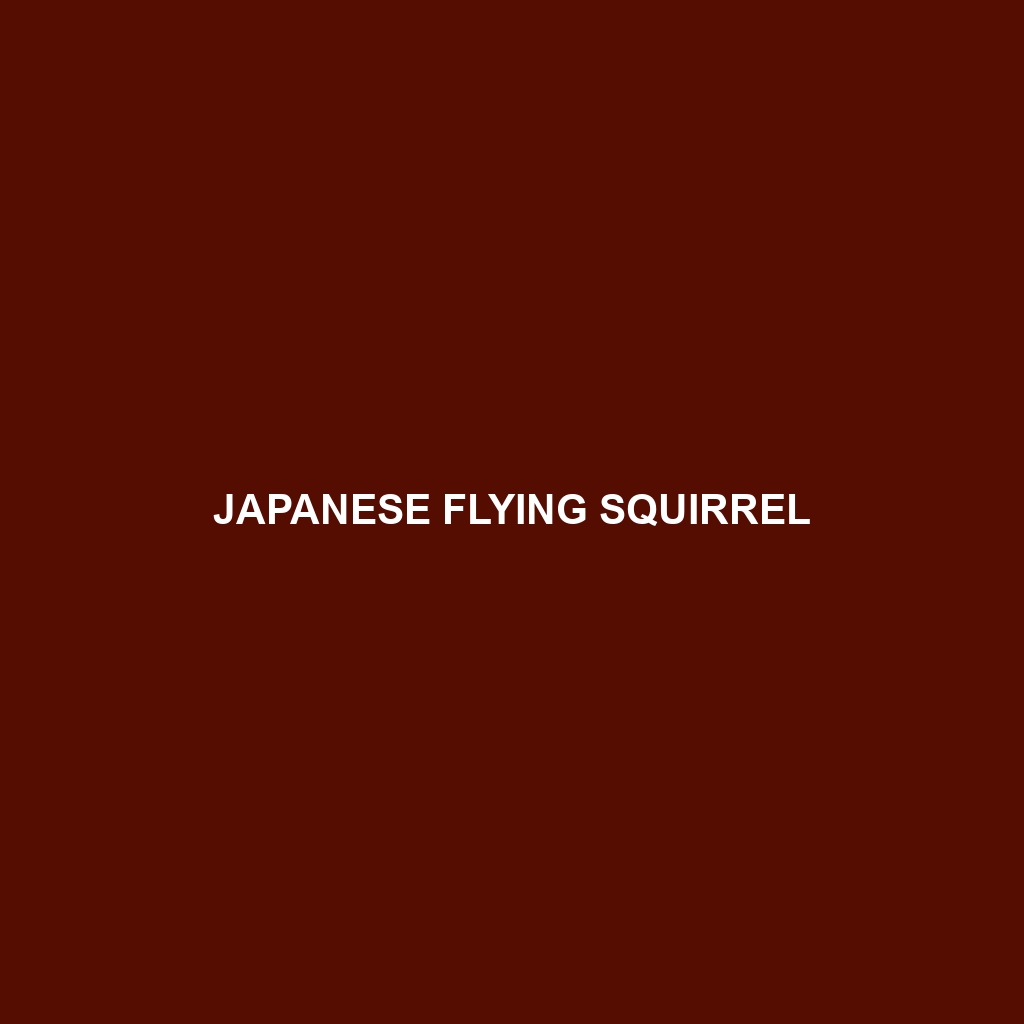Japanese Flying Squirrel (Petaurista leucogenys)
Common Name: Japanese Flying Squirrel
Scientific Name: Petaurista leucogenys
Habitat
The Japanese Flying Squirrel is primarily found in the forested regions of Japan, particularly in the islands of Honshu, Shikoku, and Kyushu. This species prefers deciduous and mixed coniferous forests, thriving at elevations ranging from sea level to mountainous terrains. These areas offer ample tree cover and a complex vertical structure, which are essential for their gliding capabilities and foraging needs.
Physical Characteristics
Japanese Flying Squirrels are medium-sized rodents, typically measuring about 25-35 cm in body length, with a bushy tail that adds another 25-30 cm. Their fur exhibits a soft texture and a distinct coloration, often grayish-brown or reddish-brown on the back with lighter underparts. One of their most notable features is the large, membranous patagium extending from the wrist to the ankle, which allows them to glide gracefully between trees. Their large, expressive eyes are adapted for nocturnal activity.
Behavior
This species is primarily arboreal and nocturnal, spending most of the day resting in tree hollows or nests made of leaves. Japanese Flying Squirrels are known for their gliding abilities, which can reach distances of over 100 meters, enabling them to evade predators. They communicate through vocalization and scent-marking, establishing territories within their forest habitats.
Diet
Japanese Flying Squirrels are herbivorous, with a diet consisting mainly of fruits, seeds, nuts, and tree bark. They exhibit selective feeding behaviors, often favoring specific tree species and seasonal food sources. During the winter months, they rely on stored foods and the bark of various trees, contributing to their foraging habits adapted to forest ecosystems.
Reproduction
The breeding season for Japanese Flying Squirrels typically occurs in late winter to early spring. After a gestation period of about 45 days, females give birth to one to three offspring, which are born hairless and blind. Young squirrels remain dependent on their mothers for several months, learning crucial survival skills before becoming independent. The nurturing behavior of the mother is an essential factor in the survival of the young.
Conservation Status
The Japanese Flying Squirrel is currently classified as vulnerable due to habitat loss and fragmentation caused by urban development and deforestation. Conservation efforts are essential to protect their natural habitats and ensure the survival of this unique species.
Interesting Facts
Japanese Flying Squirrels are known for their remarkable ability to glide gracefully from tree to tree using their specially adapted membranes. They have a unique social structure, often living in small family groups and exhibiting playful behaviors that have intrigued researchers and wildlife enthusiasts alike.
Role in Ecosystem
As important members of their forest ecosystems, Japanese Flying Squirrels play a crucial role in seed dispersal and forest regeneration. Their feeding habits contribute to the health of trees and other plant species, fostering a diverse habitat that benefits many other organisms. By serving as prey for a variety of predators, they also form an integral part of the food web.
